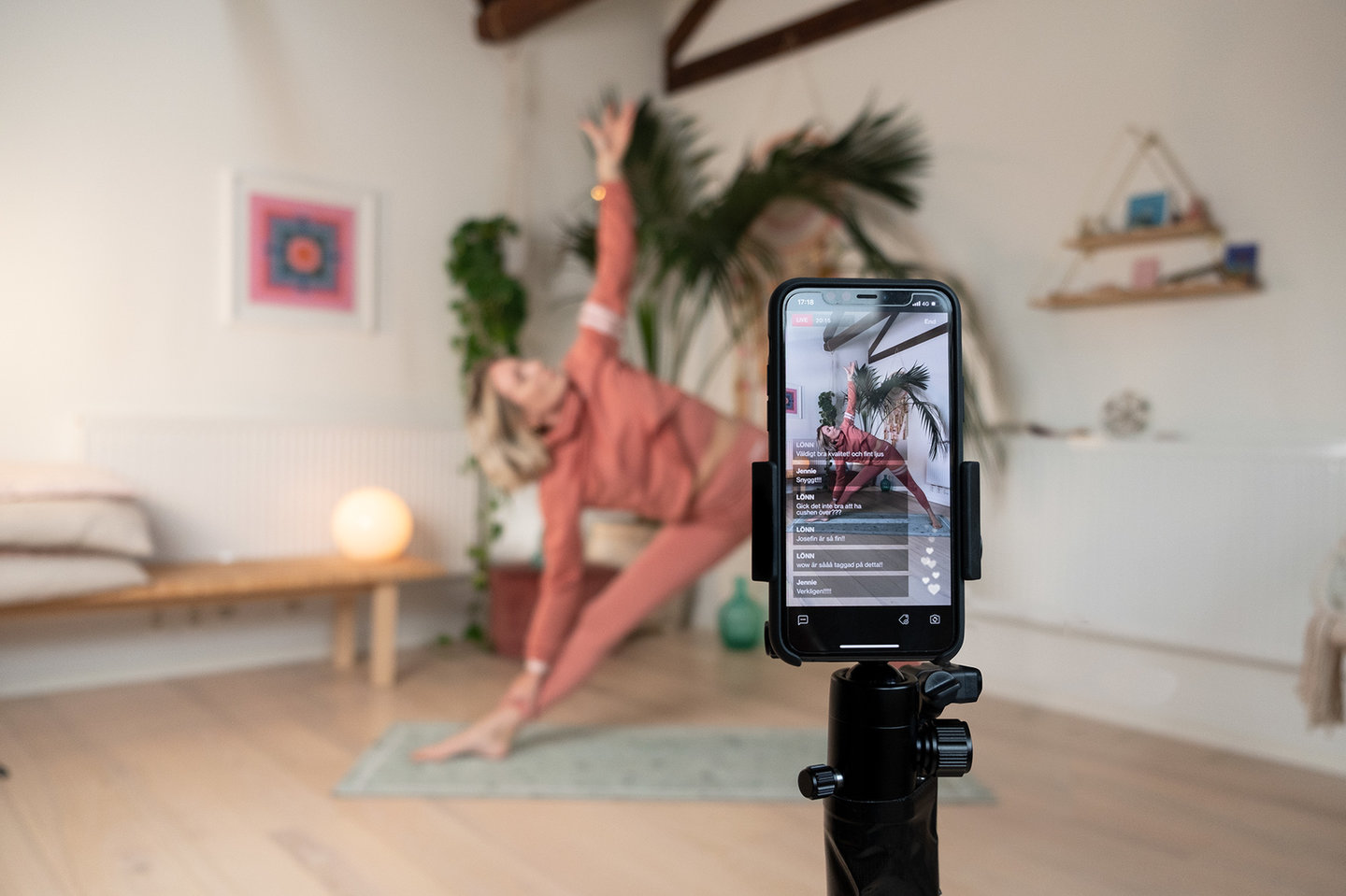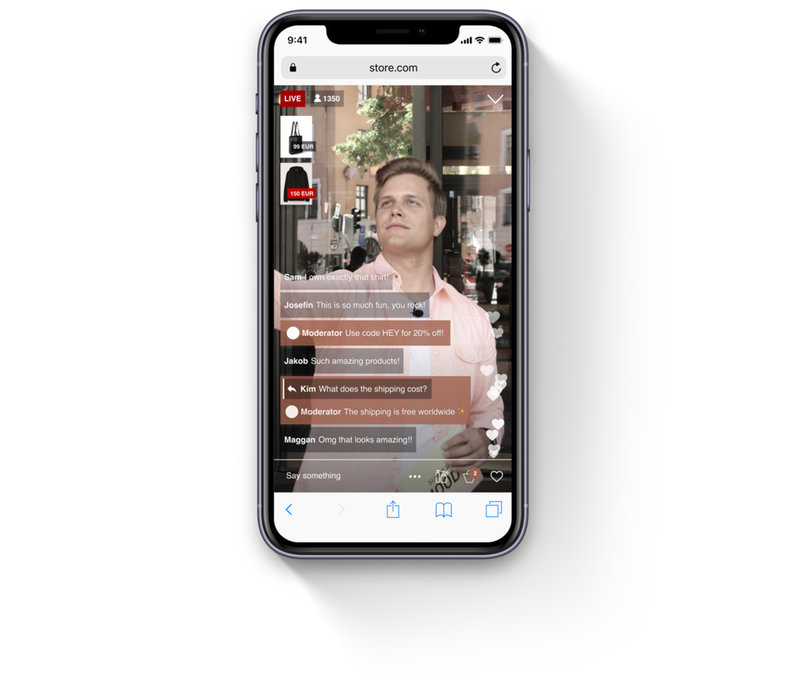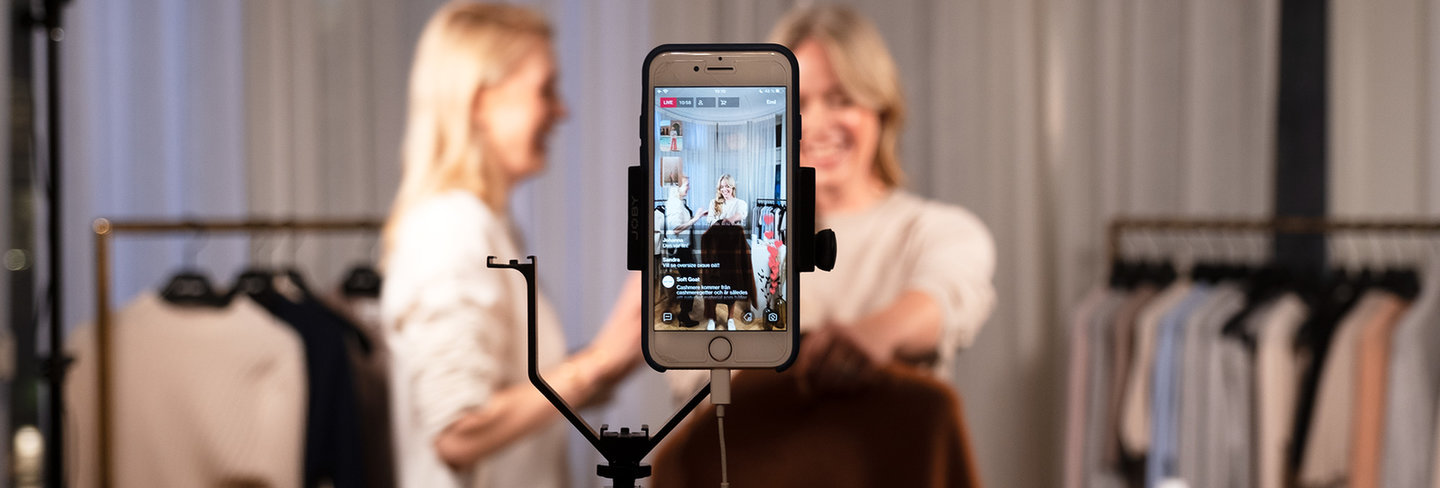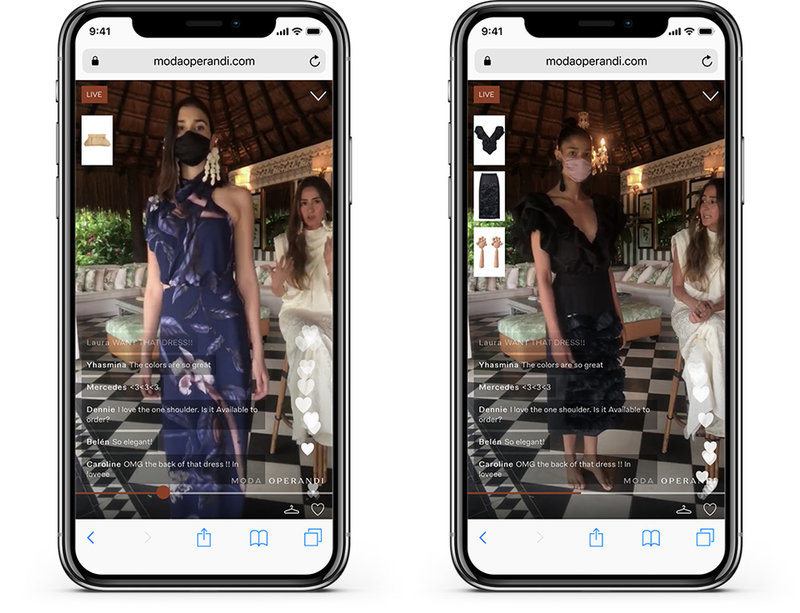Ecommerce
Could Live Stream Shopping Be the Next Leap Within Ecommerce?
Physical retail has been hit severely by the pandemic, prompting the closure of thousands of stores worldwide and putting some companies out of business. But ecommerce could also be impacted. Ellen Daniel explores whether, amid the rise of ecommerce, the online shopping channel could provide an alternative

There is no doubt that Covid-19 pandemic has hit bricks-and-mortar retail hard, with some fearing that the pandemic and could signal the beginning of the end of the high street.
Brands such as H&M, which announced the closure of 250 stores globally, and John Lewis, which is due to close eight stores in the UK, have unsurprisingly felt the effects of lockdown measures.
Of course, amidst the rising competition of ecommerce, physical retail has been feeling the pinch for some time now, with brands increasingly looking to technology to augment the in-store experience.
However, while bricks and mortar retail will undoubtedly look different in the wake of the pandemic, could online retail undergo its own transformation?
The updated shopping channel
Headquartered in Stockholm, software company Bambuser is betting on the fact that live video shopping, also known as live commerce, could soon become a cornerstone of the retail experience.
The Covid-19 pandemic has seen an influx of video communication, with meetings, conferences or simply socialising with friends and family now frequently taking the form of a Zoom or Skype call.
According to data from App Annie, weekly worldwide downloads of video conferencing apps rose from 33.7m in September 2019 to 85.5m in March 2020.
Combined with the popularity of TikTok, and Instagram's newly introduced Reels feature, it is clear that consumers are embracing video as a medium, and has led some brands to explore video shopping as a way of attracting customers online.
“For many, video already plays a role in the way the shop, with watching video content from influencers reviewing.”
Akin to TV shopping channels such as QVC and the Home Shopping Network, which rose to fame in the 1980s, live video shopping is a way for brands to showcase products. Viewers are able to tune into a livestream to view products in real-time, ask questions, access discounts and offers and, if all goes to plan, make a purchase directly from the livestream.
For many, video already plays a role in the way they shop, with watching video content from influencers reviewing, demonstrating or discussing a product now a key part of the purchasing process for many.
In fact, according to Google, 50,000 years of product review videos were watched on mobile over the past two years, with 50% of shoppers surveyed saying that video has helped them decide which specific brand or product to purchase.
According to HubSpot Research 72% of consumers, favour video over text when receiving branded marketing information.

Bambuser chat example
“A seamless way of shopping online”
Earlier this year, Google introduced a new video shopping platform called Shoploop, a mobile app that allows users to discover new products in a "snackable video format".
In 2019, Amazon launched Amazon Live, a platform for brands to showcase products during live streamed video.
In the same year, video shopping app Packagd was bought by Facebook for an undisclosed sum.
With interest from tech giants, it is clear that many are confident that video shopping could soon be a key segment of the industry and an important marketing tool for brands.
“What we do is we offer a shopping experience through a livestream.”
Originally focused on mobile live video streaming since its launch in 2007, Bambuser pivoted to live video shopping in 2019 and has already been adopted by brands such as H&M and Motivi. The company offers retailers a platform to showcase their products through hosting live shopping experiences on their websites, mobile apps and social media.
This ranges from a live event from Swedish fashion chain Gina Tricot featuring style tips from influencers Alice Stenlöf, Maria Kragmann and Hany Ahmed, to a live "trunk show" from clothing designer Joseph Altuzarra.
Sophie Ambrahamsson, chief commercial officer at Bambuser, told to Verdict how the company's video shopping technology works:
"What we do is we offer a shopping experience through a livestream. Through that livestream you can like, send comments and chat with whoever's in front of the camera, and retailers themselves can highlight and showcase products. Whoever is watching without leaving the stream can explore those products and add them to cart and proceed to checkout. So it's sort of a seamless way of shopping online, interacting in a way that we already interact with each other online."
The Covid-19 effect
This type of shopping experience is already popular in parts of Asia, with live shopping from companies such as Taobao Live expected to drive 20% of all ecommerce revenues this year in China. According to Forbes, Taobao Live's gross merchandise volume has grown by 150% per year for the past three years.
Although live video shopping is still fairly novel in other parts of the world, the Covid-19 pandemic may have accelerated its growth.
With consumers unable to visit physical stores in the first few months of the pandemic, and many still reluctant to do so now, brands have had to find creative ways of reaching shoppers and compete with the myriad of options available online. For example, John Lewis launched a virtual personal styling service, with customers able to book online appointments.
“Although live video shopping is still fairly novel in other parts of the world, the Covid-19 pandemic may have accelerated its growth.”
However, for brands striving to reach multiple shoppers at once, live stream shopping may be the answer.
Bambuser has experiences a surge in interest in its products. In the second quarter of 2020, Bambuser's net sales grew by 669% year-over-year, with the company hoping to open offices in the UK and the US due to interest from retailers and brands in those markets.
During the Covid-19 pandemic, it has raised $34.5m, bringing its total funding for 2020 to $45m, suggesting that both retailers looking to digitally transform, and consumers who have seen video communication play an increasing role in their lives, have an appetite for video shopping.

“We need to find additional ways of interacting”
As ecommerce becomes the primary way of making purchases for a growing number of consumers, Ambrahamsson predicts that shoppers will demand interactive experiences that go beyond conventional websites.
"I think we all have realised that we need to find additional ways of interacting, that we need to rethink how we live and that of course includes our shopping and spending habits,” she says.
“I don't believe that what we do is an effect of this pandemic. I do believe that we have seen a frog leap in a sense that something that was already coming just got an additional push and some extra traction given the fact that we no longer go to individual stores, and we no longer stand in queues and have expertise face-to-face. So this technology has been a way of keeping your audience and your potential customers close.
“All of a sudden, a static HTML page with a buy button doesn't really make the magic.”
"Where we thought we would be in a year or two years' time is where we find ourselves today. So from our perspective, when I started out working at Bambuser we explained what we saw in Asia, we showcased the potential and gave them the reason to believe in this technology and then fast-forward a couple of months it's a given.
“Everyone realises we need to be online; we need to interact with our customers online and more than ever we need to find a way that's more engaging, that creates more personal experiences where the brand can come across with their persona. All of a sudden, a static HTML page with a buy button doesn't really make the magic. What we do lack overall is the human connection, the interaction, the engagement and that's something that with our technology consumers can have and brands can adapt to."
With many people now accustomed to attending fitness classes, school lessons and conferences online, changes in internet behaviour may have created a space for video shopping, further aided by improving global internet speeds and the growing popularity of streaming in other areas such as gaming.
“People shop from people”
While ecommerce offers choice and convenience, Ambrahamsson predicts that shoppers may come to miss the face-to-face interactions that come with instore shopping.
"People shop from people. People don't shop from brands. I think there are three main things that have made this pop over the last month. First being the fact that our internet behaviour has moved from text to image to video...we're just following that direction saying let's take video to the next step which is live video,” she says.
“It's hard for us to look instore to get inspiration. This is a great tool to inspire and to engage way beyond what you can do with text and images.”
“Then I also believe that the younger millennials and the new Gen Zs grew up with influencer marketing. For them they'd rather take advice from someone they admire or someone they follow or their community rather than buying off the shelf from an ad. And then thirdly the new reality makes us unable to meet in person to the same extent. It's hard for us to look instore to get inspiration. This is a great tool to inspire and to engage way beyond what you can do with text and images."
In this context, Ambrahamsson is confident that video shopping will play a major role in the future of retail.
"I've been in this space for so long and I've seen everything from social media, to influencer marketing taking off and to be a part of this new paradigm that's taking place, it's truly amazing," she says.
"I would say I work for a company that's currently creating the future of retail. We are disrupting how people shop online.
"Bambuser itself as a company has been around in the livestreaming space since 2007 which kind of sets us apart currently as we have a very deep knowledge and a very deep expertise when it comes to technology."

Bambuser Moda Operandi
“All of a sudden there are no physical barriers”
For brands, video shopping offers a new way to interact with potential customers, bridging the gap between physical and online retail.
According to Bambuser, an average viewer of a Bambuser live video shopping show watched for 11.18 minutes, and 12% added at least one item to their shopping cart. The average add-to-cart rate in the beauty segment is 36%.
The company also allows brands to personalise their interface, with the option to change colours logos and icons based on brand identity.
“There are no physical barriers so the shop assistants and store staff can interact with way more people and be of help and assistance.”
"There are various ways of working with this technology that we have discovered together with our customers, everything from having more event-based shows where you have maybe talent or influencers being hosted or part of a livestream," says Ambrahamsson.
"Or digging in, in more of a discovery way, so the brand explains and showcases and talks about the product in detail, or comparing products and giving product advice where a lot of expertise is involved or even brands that are using this as a bridge between the online reality and the brick and mortar stores. So we have a bunch of clients that are using store personnel...all of a sudden there are no physical barriers so the shop assistants and store staff can interact with way more people and be of help and assistance."
She notes that this has proved particularly effective for luxury brands, where shoppers may seek out more information and guidance before making a big purchase.
“The next leap within commerce”
Although the events of 2020 have proven that it is impossible to predict how the industry will look in the future, it is clear that just like bricks and mortar stores, online retailers must continue to innovate to stand out from the crowd.
Abrahamsson believes it is important for brands to embrace new technology and become "first movers".
"I think there's always huge potential for a brand to position themselves somewhere. And when you have a new technology that will be disrupting, it's not a matter of 'if' it's a matter of 'when' this will be a commodity in our part of the world, if you as a retailer right now can say 'let's claim this space', let's be the go-to destination for live video shopping for beauty, for groceries, for consumer electronics, for kids' wear, for toys. As with everything, when there's something new out there, to claim and to be first movers always gives an advantage," she says.
“I believe this is something that over time will be the status quo for shopping.”
"I believe this is something that over time will be the status quo for shopping. I can't really see why someone would shop from an HTML page with images and text if you could shop the same thing by watching it live in a video and asking questions."
She believes that in the future it could even overtake conventional ecommerce websites as the dominate way of shopping online:
"I believe strongly that this is going to be the next leap within commerce...I believe that two years from now when we look back at 2020 we will probably say this is where it all started but it was only a way of accelerating something that was coming our way.
“I truly believe that in the same way as we now do everything in video when we interact, I think that our shopping experiences will be interactive shopping experiences. I think live video shopping will be one of the most prominent interactive ways of shopping. And I also believe given the challenges that physical retail is facing which we all know very well, this will be one of the tools that will help forward-leaning companies to bridge the gap."
All images courtesy of Bambuser
Back to top